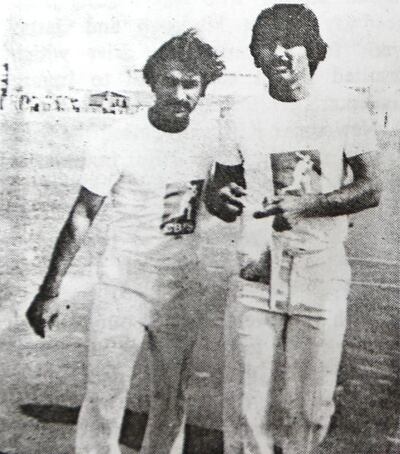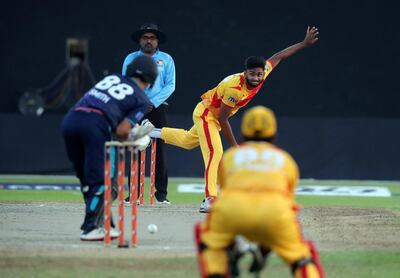A series that was central to the UAE becoming a major destination for international cricket is set to be revamped for the benefit of domestic players.
Sharjah became a thriving hub for the sport in the 1980s after the inauguration of the Cricketers Benefit Fund Series (CBFS) by the Emirati industrialist Abdul Rahman Bukhatir.
That was set up nominally for the sake of international stars of the game, and became an established feature on the global cricket calendar, most notably via regular matches between India and Pakistan.
Now Bukhatir’s two sons, Waleed and Khalaf, are driving an initiative to promote the grassroots game in the Emirate, under the label of “CBFS 2.0”.
Their wide-ranging plans include a total of 498 matches from Under 13 up to elite level, involving the country’s top academies and the eight leading domestic clubs.
Significantly, there are plans to stage 102 50-over matches, and 36 two-day matches, played in whites and using a red ball.
Almost all cricket in the country in the recent past has been white-ball, short-format matches. For example, since returning from lockdown last year, the leading players have played three 10-over tournaments, and one T20 event.
The exhaustive schedule of matches will be accompanied by a new team- and player-ranking system, to help with the process of identifying players for scholarship coaching programmes.
“CBFS did a great job developing cricket, and many of the stars of today learned their love of cricket from matches that were played in Sharjah in the 1990s,” said Nasser Akram, a former secretary general of the Emirates Cricket Board.
“I am sure this will continue to promote cricket among the youth.”
Sharjah cricket has its foundations in the CBFS series, which was first played in April 1981 with a match at a new grass ground, with a cement wicket overlaid with Astroturf
The fixture was played between a Javed Miandad XI and a Sunil Gavaskar XI, with the funds going to retired Pakistan players Hanif Mohammed and Asif Iqbal.
As many as 8,000 spectators watched from temporary scaffolding stands, with 8,000 more people left standing outside.
There were no dressing rooms, and the teams of star cricketers were given their lunch in a sports hall at the neighbouring football ground.
“This was initially set up to support retired cricketers, and benefit them with a purse for their services rendered in their heyday,” Mazhar Khan, the Sharjah Cricket administrator, said.
“It was a unique thing to support past cricketers. Now the second phase of CBFS is a big moment for us, as the development of cricket among the youngsters is the greatest thing one can achieve.
“We have been associated with so many countries, so many matches, and so many boards, but now the aim is to promote cricket among developing junior players.”
As a clue to the long-standing impact of the series, the walls surrounding the Sharjah Cricket Stadium are still adorned with reliefs of the old CBFS logo on the outside.
“Sharjah has always been a pioneer of this game in the UAE,” Zayed Abbas, an Emirates Cricket Board member, said.
“Reviving CBFS once more, and this time for the benefit of our youth, is a very big win for UAE cricket.”
The matches are set to get underway with a block of T20 fixtures starting in June.
The exhaustive plans for the event have even included relaying pitches in the central wicket at Sharjah stadium that will aid fast bowling.
The UAE’s oldest cricket ground is famous for being friendly for batsmen, but the two new pitches will be curated with a view to providing assistance for seamers in longer format matches.
Yodhin Punja, the Abu Dhabi fast bowler who was the UAE’s youngest international player, is impressed with the plan to prioritise multi-day cricket.
“It’s exciting as a younger cricket in this country to know that Sharjah is thinking about the longer formats of the game,” Punja said.
“The longer formats are very important for the development of cricket in the UAE in general. It sends a good message to all other Associate nations as well, to shift their focus and put more value on Test status.
“I think red-ball cricket is the best way of promoting patience in our youngsters, and the right way to play cricket.”








